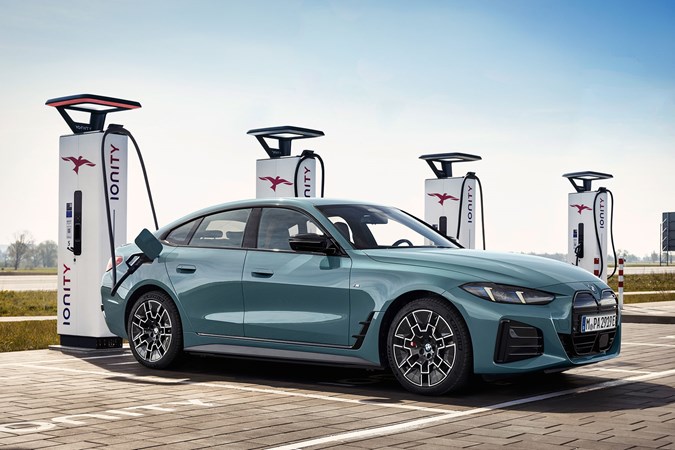
BMW i4 running costs and reliability

Miles per pound (mpp) ⓘ
| Electric motors, home charging | 8.2 - 12.1 mpp |
|---|---|
| Electric motors, public charging | 4.4 - 6.5 mpp |
Fuel economy ⓘ
| Electric motors | 2.8 - 4.1 miles/kWh |
|---|
- The i4 isn’t that efficient for an EV
- Low running costs compared to a petrol
- eDrive40 has a real-world range of 300 miles
What are the running costs?
How much you’ll spend on keeping your BMW i4 on the road depends entirely on where you charge it up. You’ll get the cheapest rates charging at home, especially if you’re on a tariff that gives you special rates for off-peak usage. Conversely, if you use pricey public charging, your running costs will go up accordingly.
The best option for high-mileage drivers is the eDrive40. It has an 81.3kWh battery pack that returns a real-world range of around 300 miles (if you drive it gently). Use its power often and you can expect that figure to drop into the mid-to-high 200-mile range.
During our time with the M50, we managed to extract more than 200 miles of range at a fast motorway cruise. That sounds a little disappointing when you consider BMW claims the car can achieve up to 318 miles in WLTP testing – but we reckon few drivers will crash through more than 200 miles in a single stint. Plus, the BMW’s rapid charging tech means you won’t be waiting around for very long if you’re planning to take it across Europe.

Every i4 supports 205kW DC charging which, in theory, can charge the battery from empty to 80% capacity in half an hour. If you’re charging from a 7kW home charger, you’ll need 13 hours for a full charge, while a faster 11kW charger takes a little over eight hours. Connect it to a regular three-pin plug and you’ll be waiting for almost two days.
Just be wary of the i4’s efficiency. The only reason it has a long range is because it has a massive battery pack – but it doesn’t use its electricity particularly frugally. During our time with the M50, we averaged around 2.5 miles per kWh. That’s a long way behind the 4.0 miles per kWh we got from the Tesla Model Y.
Servicing and warranty
BMW delivers the i4 with a three-year, unlimited mileage warranty with free roadside assistance. That’s good news for particularly high-mileage drivers and, though the time period isn’t particularly generous, it’s comparable to the three years/60k mile terms you’d get on a Polestar 2 or the four years/unlimited mile warranty of a Tesla Model 3. You also get eight years and 100,000 miles coverage for the battery pack itself, protecting you against loss of capacity.
BMW servicing plans are available to cover scheduled maintenance, but out-of-plan servicing will likely be quite pricey at a BMW main dealer.
Reliability
The BMW i4 has proved itself to be an exceptionally reliable car. It made the shortlist in the 2024 Fleet News FN50 reliability survey, which analyses data from the UK’s top 50 leasing companies to single out the cars with the fewest number of breakdowns and warranty claims. The i4 placed seventh overall – but BMW as a brand stole the title of ‘most reliable manufacturer’ from none other than Toyota. What more proof do you need?
Ongoing running costs
| Road tax | £620 |
|---|---|
| Insurance group | 34 - 45 |
Get an insurance quote with

|
|









































